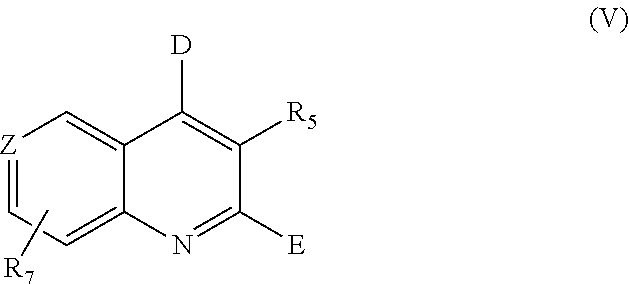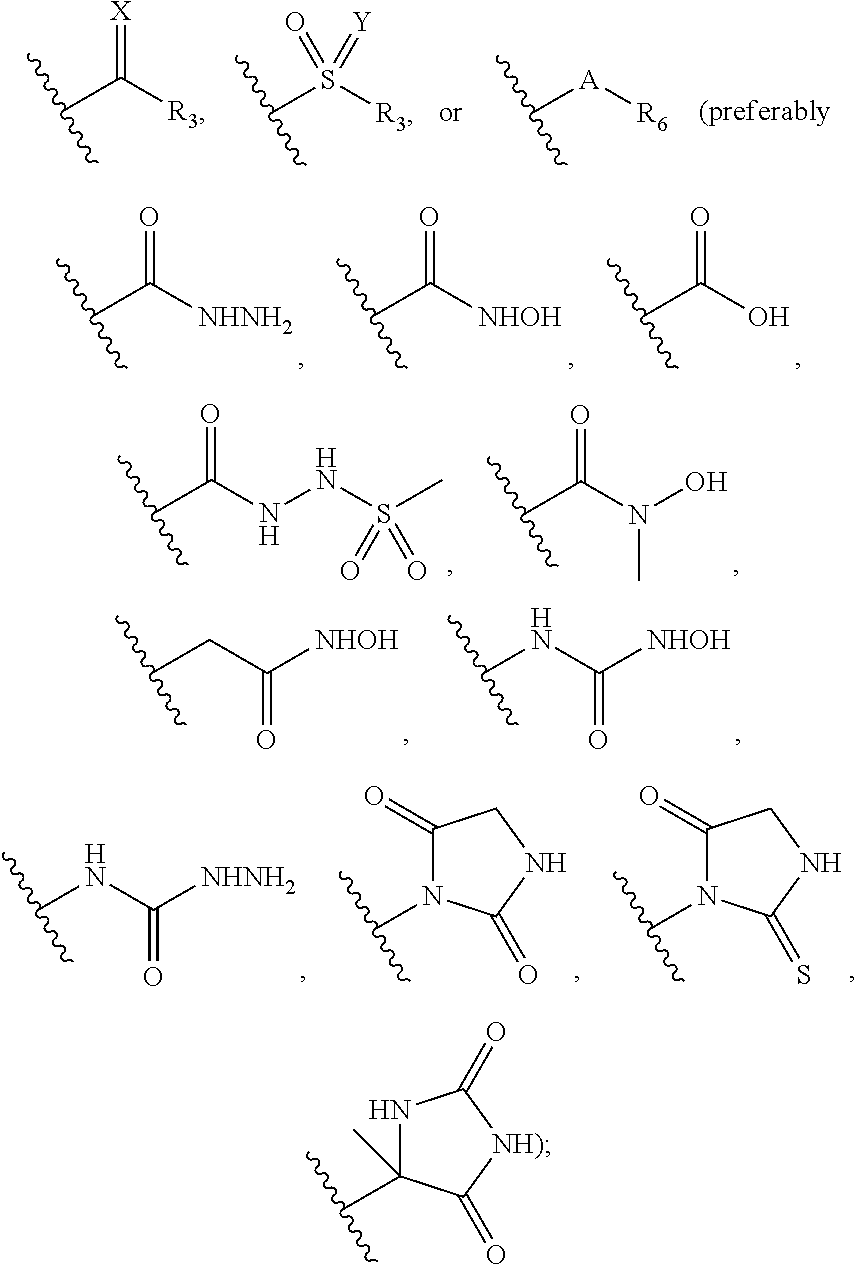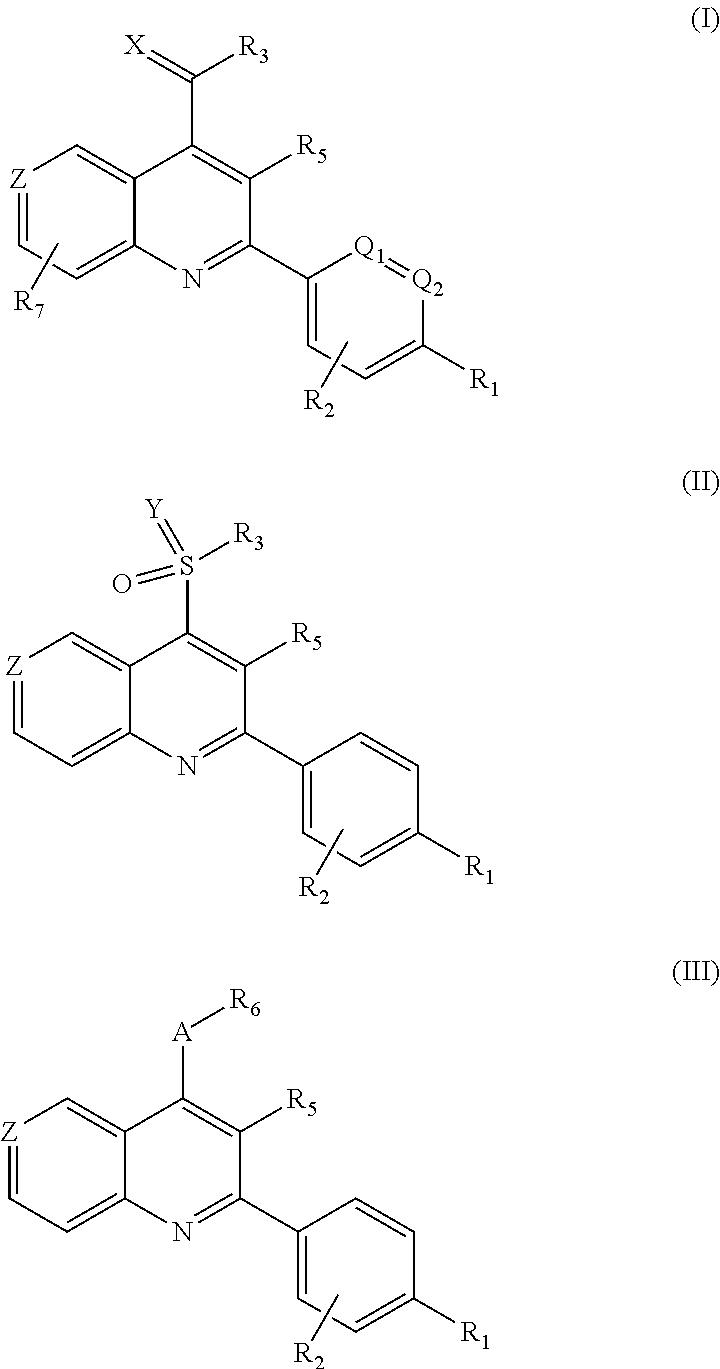Metalloenzyme inhibitor compounds
a technology of enzyme inhibitors and compounds, applied in the field of metaloenzyme inhibitor compounds, can solve the problem of dramatic decrease of enzyme activity
- Summary
- Abstract
- Description
- Claims
- Application Information
AI Technical Summary
Benefits of technology
Problems solved by technology
Method used
Image
Examples
example 1
5-(2-(4′-((2-hydroxyethyl)amino)-[1,1′-biphenyl]-4-yl)-1,6-naphthyridin-4-yl)-5-methylimidazolidine-2,4-dione hydrochloride (1)
[0817]To a stirred solution of 4-amino pyridine (A; 5 g, 53.12 mmol) in CHCl3 (200 mL) were added triethylamine (TEA or Et3N) (11.5 mL, 106.2 mmol) followed by pivaloyl chloride (7.15 mL, 69 mmol) dropwise at 0° C. over a period of 10 minutes (min) The reaction mixture was warmed to RT and stirred for 1.5 hours (h). The progress of the reaction was monitored by thin layer chromatography (TLC). The reaction mixture was washed with saturated sodium bicarbonate (NaHCO3) solution, dried over anhydrous Na2SO4 and concentrated under reduced pressure. The obtained crude material was purified by silica gel column chromatography eluting with 10% methanol (MeOH) / dichloromethane (CH2Cl2) to afford B (7 g, 73.9%) as an off-white solid. 1H NMR (200 MHz, DMSO-d6): δ 9.54 (bs, NH), 8.40 (d, J=5.8 Hz, 2H), 7.67 (d, J=6.4 Hz, 2H), 1.23 (s, 9H). MS (ESI): m / z 179 [M++1].
[0818...
example 2
[0828]1-Hydroxy-3-(2-(4′-(2-hydroxyethylamino)biphenyl-4-yl)-1,6-naphthyridin-4-yl)urea (2)
[0829]To a stirred solution of 2-(4-bromophenyl)-1,6-naphthyridine-4-carboxylic acid (D; 3 g, 9.1 mmol) in t-BuOH (50 mL) was added Et3N (2.5 mL, 18.2 mmol) followed by diphenylphosphoryl azide (DPPA; 4.2 mL, 18.2 mmol) at RT. The reaction mixture was heated to reflux for 18 h. The progress of the reaction was monitored by TLC. The volatiles were removed under reduced pressure. The obtained crude material was purified by silica gel column chromatography eluting with 8% MeOH / CH2Cl2 to afford J (2.1 g, 58%) as a brown solid. 1H NMR (500 MHz, DMSO-d6): δ 10.32 (s, 1H), 9.73 (s, 1H), 8.69 (d, J=5.5 Hz, 1H), 8.63 (s, 1H), 8.11 (d, J=8.5 Hz, 2H), 7.84 (d, J=5.5 Hz, 1H), 7.78 (d, J=8.5 Hz, 2H), 1.58 (s, 9H). MS (ESI): 400 [M+], 402 [M++2].
[0830]To a stirred solution of J (2 g, 5.01 mmol) in CH2Cl2 (50 mL) was added trifluoroacetic acid (TFA; 15 mL, 5.01 mmol) at 0° C. The reaction mixture was warmed ...
example 3
2-(4′-((2-Hydroxyethyl)amino)-[1,1′-biphenyl]-4-yl)-1,6-naphthyridine-4-carboxylic acid (3)
[0834]To a stirred solution of acid D (50 mg, 0.15 mmol) in MeOH / Et2O (1:4, 20 mL) was added freshly prepared diazomethane [N-nitroso-N-methylurea (78 mg, 0.75 mmol) in 40% aqueous KOH (10 mL) / Et2O (20 mL)] at 0° C. and stirred for 1 h. After consumption of the starting material by TLC, the solvent was evaporated under reduced pressure. The obtained crude product was purified by silica gel column chromatography eluting with 8% MeOH / CH2Cl2 to afford ester N (40 mg, 76.9%) as an off-white solid. 1H NMR (500 MHz, CDCl3): δ 10.15 (s, 1H), 8.84 (d, J=6.0 Hz, 1H), 8.47 (s, 1H), 8.13 (d, J=8.5 Hz, 2H), 8.00 (d, J=6.0 Hz, 1H), 7.71 (d, J=8.5 Hz, 2H), 4.12 (s, 3H). MS (ESI): m / z 342.9 [M++1].
[0835]To a stirred solution of ester N (0.4 g, 1.16 mmol) and 2-((4-(4,4,5-trimethyl-1,3,2-dioxaborolan-2-yl)phenyl)amino)ethanol (0.37 g, 1.40 mmol) in THF:H2O (25 mL, 4:1) was added K2CO3 (0.484 g, 3.48 mmol) at ...
PUM
 Login to View More
Login to View More Abstract
Description
Claims
Application Information
 Login to View More
Login to View More - R&D
- Intellectual Property
- Life Sciences
- Materials
- Tech Scout
- Unparalleled Data Quality
- Higher Quality Content
- 60% Fewer Hallucinations
Browse by: Latest US Patents, China's latest patents, Technical Efficacy Thesaurus, Application Domain, Technology Topic, Popular Technical Reports.
© 2025 PatSnap. All rights reserved.Legal|Privacy policy|Modern Slavery Act Transparency Statement|Sitemap|About US| Contact US: help@patsnap.com



